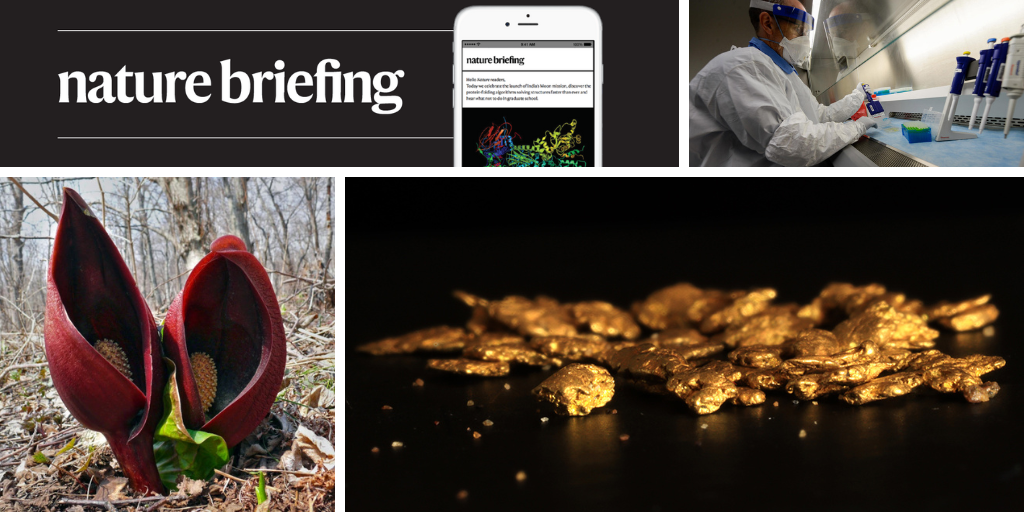
"The small tweak to the enzyme disulfide synthase allows plants like skunk cabbage to produce distinctive scents, showcasing a fascinating adaptability in the plant kingdom."
"At the Large Hadron Collider, physicists momentarily turn lead into gold through a high-speed ion collision, leading to transformation via ejected protons, though it's impractical for gold production."
A slight modification of the enzyme disulfide synthase enables stinky plants, such as skunk cabbage, to emit their strong odors by converting sulfur-containing molecules into odorous compounds. Interestingly, the ability to produce such smells, including those akin to faeces and rotting meat, has evolved in some plant species multiple times within a mere seven million years. In a separate study, physicists at the Large Hadron Collider briefly transformed lead into gold, creating gold nuclei for a fraction of a second, showcasing extraordinary physical phenomena, albeit not feasible for economic gold production.
Read at Nature
Unable to calculate read time
Collection
[
|
...
]